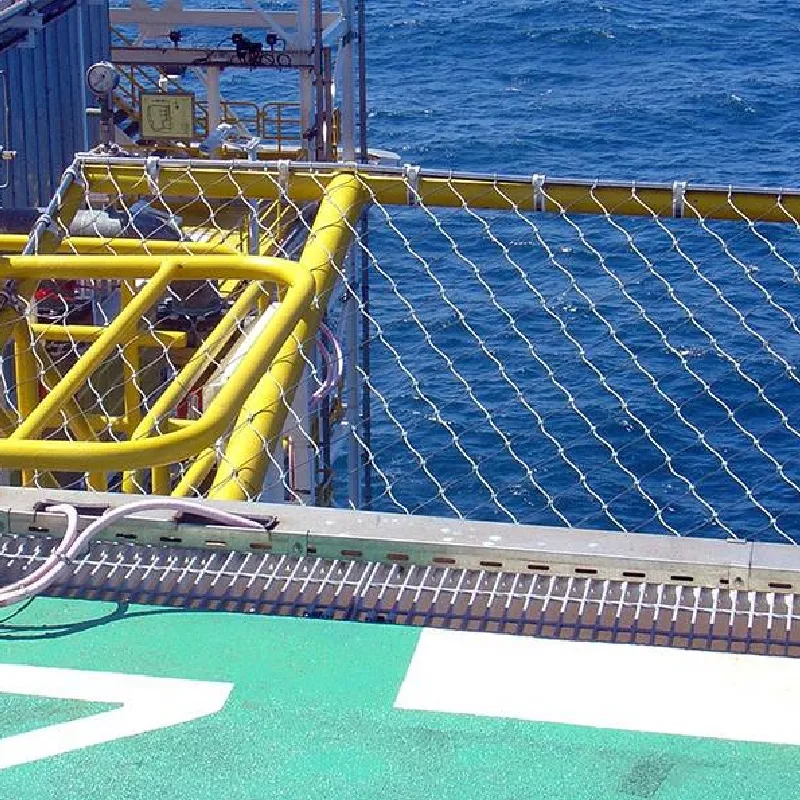- Industrial zone, South of Anping Town, Hengshui, Hebei, China.
- sales@hfpetromesh.com
- +86-18931809706
High-Quality Stainless Steel Grating - Durable & Corrosion-Resistant Solutions
Stainless Steel Grating Specification A Comprehensive Overview
Stainless steel grating is increasingly popular in industrial and commercial applications due to its durability, strength, and resistance to corrosion. It is commonly utilized in walkways, platforms, stair treads, and other areas where safety and cleanliness are paramount. To ensure optimal performance and adherence to safety standards, understanding the specifications for stainless steel grating is essential.
Material Composition
Stainless steel grating is typically made from various grades of stainless steel, with the most commonly used grades being 304 and 316. Grade 304 offers good corrosion resistance and is suitable for moderate environments, while grade 316 offers superior resistance, making it ideal for more challenging environments, such as marine applications. The choice of material affects not only corrosion resistance but also strength, weight, and cost.
Standard Specifications
The specifications of stainless steel grating can vary based on factors such as load requirements, open area percentage, and manufacturing processes. The American National Standards Institute (ANSI) and the American Society for Testing and Materials (ASTM) provide guidelines for manufacturing and testing metal gratings. Common standards include ASTM A240 for stainless steel plates and ASTM A570 for structural steel bars. These standards outline specifications regarding yield strength, tensile strength, and elongation.
Types of Stainless Steel Grating
There are various types of stainless steel grating, each designed for specific applications
1. Bar Grating Formed from parallel bars that are welded or fused together, this type provides excellent strength and is often used for truck ramps, flooring, and platforms.
stainless steel grating specification

3. Swage-Locked Grating This type is manufactured by mechanically interlocking the load bars and crossbars, offering enhanced strength and stability, often used in heavy loading applications.
4. Pressed Steel Grating Utilizing high-strength steel for its bars, pressed steel grating is commonly employed in applications where high resistance to impact and wear is required.
Load Capacity
Load capacity is a critical specification for stainless steel grating. It is typically categorized into light, medium, and heavy-duty. The load capacity depends on factors such as the spacing of load bars, the thickness of the bars, and the type of grating used. It is crucial to select grating that can withstand the specific loads expected in the application area, thereby ensuring safety and performance.
Installation and Maintenance
Proper installation of stainless steel grating involves ensuring that it is securely fixed to its support structure and meets all local building codes. Regular maintenance is also essential to prolong the lifespan of the grating. This includes routine inspections for any signs of wear or corrosion and cleaning to prevent the buildup of debris, which can lead to slip hazards.
Conclusion
Stainless steel grating is a versatile, durable, and practical solution for various applications across industries. By understanding the specifications—such as material composition, types, load capacities, and installation requirements—engineers and contractors can make informed decisions to enhance safety and efficiency in their projects. With proper selection and maintenance, stainless steel grating can provide long-lasting performance and reliability in demanding environments.
-
The Power of Pyramid Shaker Screen - A 3-Dimensional SolutionNewsOct.24,2024
-
Exploring the Versatility and Durability of Steel GratingNewsOct.24,2024
-
Revolutionizing Drilling Efficiency with Steel Frame Shaker Screens for Mud Shale ShakersNewsOct.24,2024
-
Potential of Shale Shaker ScreensNewsOct.24,2024
-
Offshore Pipeline Counterweight Welded Mesh - Reinforced Mesh in Marine EngineeringNewsOct.24,2024
-
Revolutionizing Offshore Pipeline Stability with Concrete Weight Coating MeshNewsOct.24,2024
